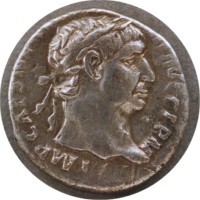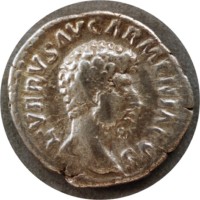The Golden Age Emperors : Sestertius of Young
Marcus Aurelius ...
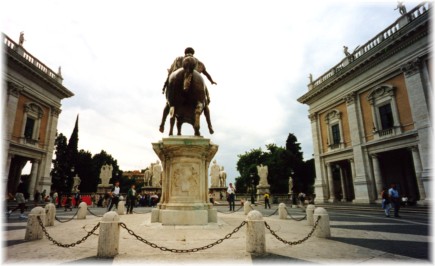
and Adoptive Father Antoninus Pius!
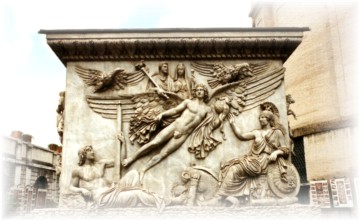
The term "Golden Age" has been used to describe the period of Roman rule from 98 to 180 CE, encompassing the reigns of Trajan, followed by Hadrian and the Antonines : Antoninus Pius, Lucius Verus (early co-regent to Marcus), culminating in the "Philosopher King" Marcus Aurelius. At his time, the empire was at its largest geographically; but stable, prosperous, without civil war and more content with containment than expansion. [Ramage and Ramage, Roman Art, 1991, p.194] The coin on this page features the young Caesar Marcus and his adopive father Antoninus. For his defense of Rome at the Danube and the profound ethical messages of his Meditations, Marcus the "philosopher King" is still celebrated today -- at the very heart of Rome: Capitoline Hill. The opening photograph of this page was taken on the Campidoglio where a modern copy (placed in April, 1997) of the great Equestrian Statue of Marcus Aurelius overlooks Rome. The next photo, above, is a monument to Marcus' father in a courtyard of the Vatican Museums : The Column Base "Apotheosis of Antoninus Pius and Faustina."
The Piazza del Campidoglio was designed by Michelangelo. The photograph below, right, shows the "Cordonata" (ramp) leading up the capitol of the world to the restored, classical Dioscuri pieces and Marcus beyond. The equestrian statue of Marcus shown below, left, is the original on display at one of the two great antiquities museums on the Campidoglio : The Palazzo Nuovo. This great bronze work of the 2nd Century was once gilded, as the photo shows, and once restored and installed by Michelangelo himself. At this epicenter of the Roman Empire, two museums of ancient wonders, Palazzo dei Conservatori and Palazzo Nuovo, replace respectively the great ancient Temples of Jupiter and Juno. [Liberman, Campidoglio, 1994]
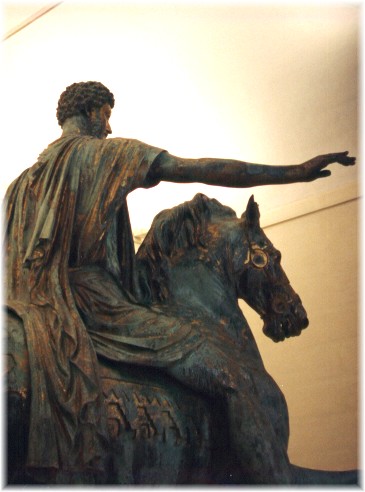
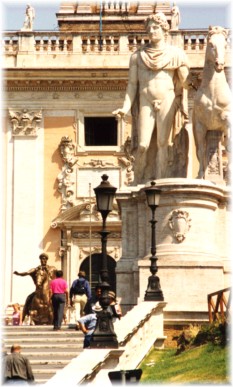
~
~
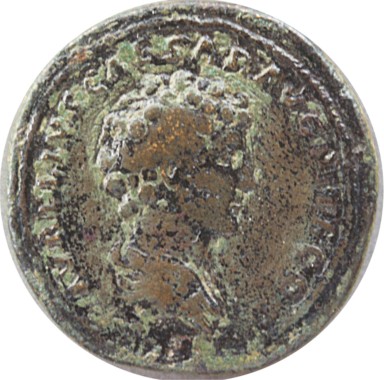
Rome, Bronze Sestertius, 140-144 CE.
Reverse: Bare-headed bust of Marcus Aurelius, Caesar. [RIC III 1212]

Obverse: Laureate head of Antoninus Pius.
~
~
Q: To complete a set of ancient coins of the five "Golden Age Emperors," three additional pieces are presented immediately below. Can you name the emperors and attribute each coin?
Hint1: The reverses of the coins are also presented to facilitate attribution.
Hint2: Nerva, who introduces the Golden Age, is excluded from this classification. (A coin of Nerva is to be encountered on another page of this web site.)
